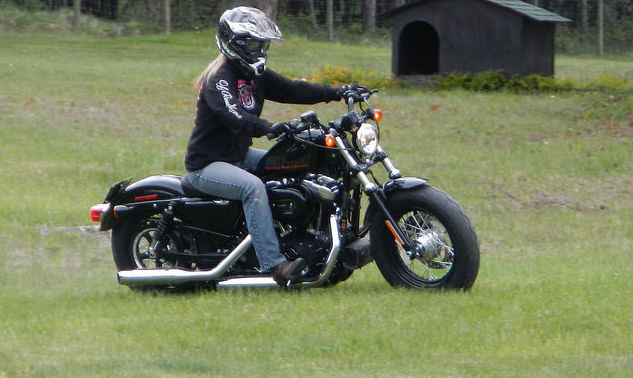How to start off the wrong way on a street bike:
- Get the hottest, fastest bike you can find—immediately. Extra points for performance enhancements and horsepower-boosting technology. Who cares if you can’t control it? You will be like a god in front of your peers.
- Flip-flops and white tank tops are a great way to show how cool you really are. Skin showing amps up the super-bad vibe. Safety gear is for wimps—you want to appear tough and gnarly as a biker. Looks matter! Safety is for suckas.
- You know you look super bad, and your bike sounds fast and mean, so don’t bother shoulder checking or driving defensively. Shoulder checking and defensive driving are for wimps. Everyone around sees you and is revelling in your awesomeness. Don’t worry about what other drivers are doing. You are the important one.
- Nothing elevates the cool factor more than having a passenger on the back of your bike. Extra points if you have a girl in a bikini top.
- Go fast all the time. Control will come later. Ride it like you stole it.
The excitement felt by first-time motorcycle riders is hard to contain. Starting off the right way, with proper technique and awareness, is important. Developing bad habits can be a slippery slope that is difficult to recover from. While some of the points above seem to be blatant violations of common sense, each year several riders are injured or killed simply because they were “doing it wrong.”
How to start the right way:
Here are some tips to start you off on the right track.
- Take a course. Learning from a motorcycle instructor will help give you skills, awareness and understanding, which will help create a solid foundation to grow from. Some insurance companies provide a discount to those who have taken a course taught by a certified instructor. “I took a private lesson with Greg Dixon from the Kootenays’ best riding school. Was the best thing I ever did—from learning to stop quickly and avoid obstacles to mastering slow controlled riding and U-turns,” said Jen Hansen of Cranbrook, B.C. “And, yes, always look at every side road both ways. Definitely assume people don’t see you.”
- Defensive driving is a must. People in cars, or “cagers” as they are sometimes referred to, have many blind spots, so assuming they cannot see you on a motorcycle is a great starting point. And consider yourself as invisible. “Too many people don’t look and therefore don’t see you,” notes Marilin States Grahn of Creston, B.C. The consequences of a collision with a car are far more severe for those on a street bike than those in the car or truck. Assume they can’t see you and make decisions from there.
- Wear all the gear all the time, no exceptions. This goes for passengers too. While the girl in the bikini on the back of your bike may seem like an impressive statement, skin grafts, flesh peeling from the bones, broken bones and spinal cord injuries tend to create a longer-lasting statement.
-
Ride a bike that is within your skill set, meaning if you are a brand new rider, a GSXR 1000 is most likely not the wisest choice for a first bike. Too much power could be difficult to control for a new rider and could result in death or injury. Seat height is a big one for new riders. You need to be able to feel comfortable and in control at all times; this includes being able to touch the ground at a stop light.
“Make sure your bike fits your ability no matter how badly you want the biggest or coolest scooter out there. And then ride that bike within your skill level. If you go too big for your first bike or too fast, you WILL go down,” said Jason Whittaker of Naples, Idaho. - Practise before your test. Practise after your test. Practise. Control at low speeds can be difficult to master. Learning how to control your bike and navigate a variety of roadways will help you prepare for longer journeys. Cornering, braking and evasive maneuvers are all important skills to practise.
- Ride within your comfort zone and skill set. Pushing yourself past your level of skill could result in a loss of control. Don’t feel pushed, and ride at your own pace. Choosing supportive riding companions will help you become a safe, confident rider.
- Physical strength, stamina and mental alertness are a must if you are heading out in the streets with your bike. You must be bringing your A game, for any lapse in judgement could have severe consequences. If you’re out on a ride and you find your mind or body becoming fatigued, stop, take a rest and recharge.








Comments